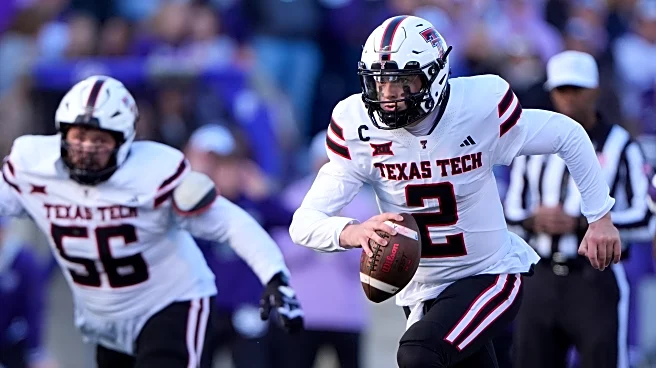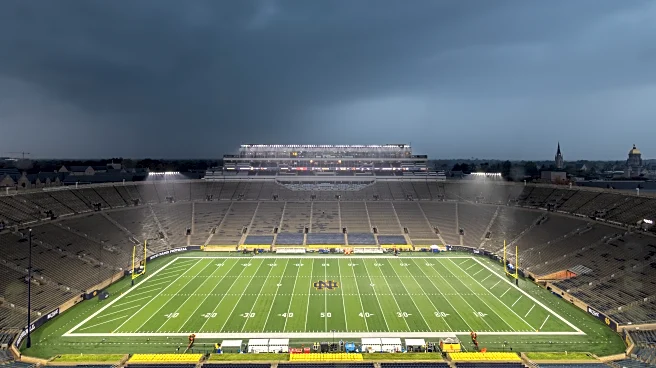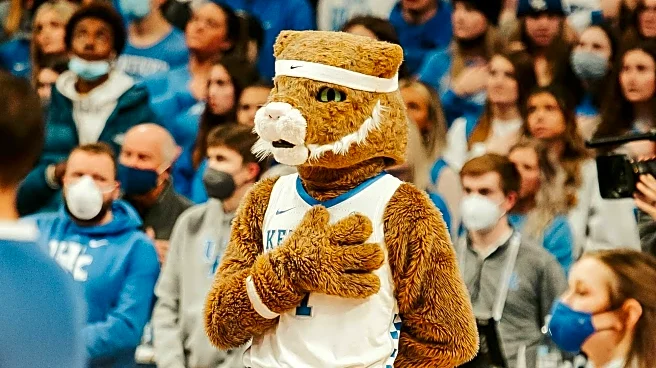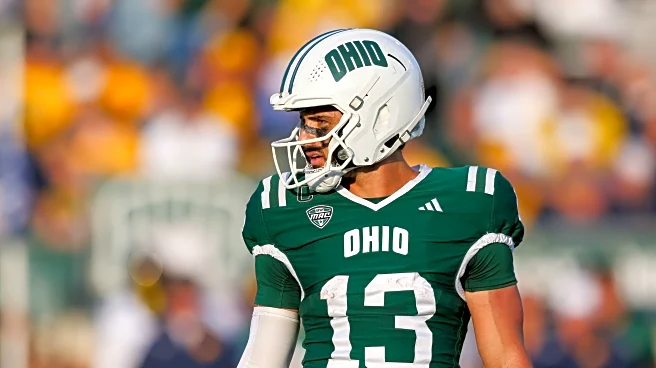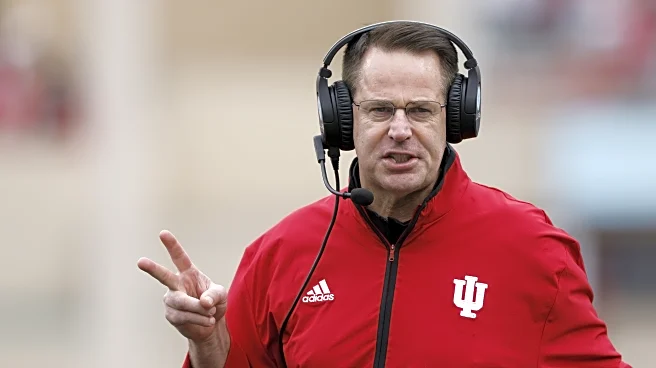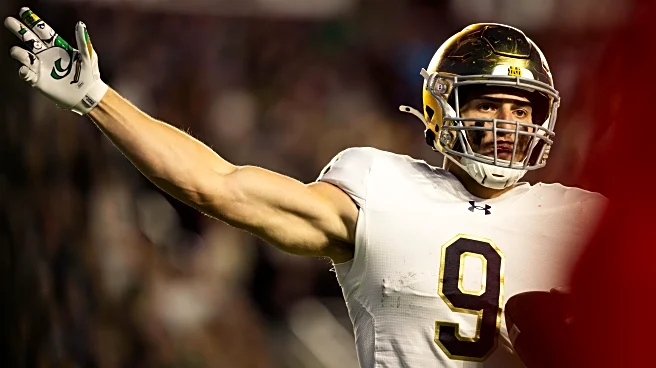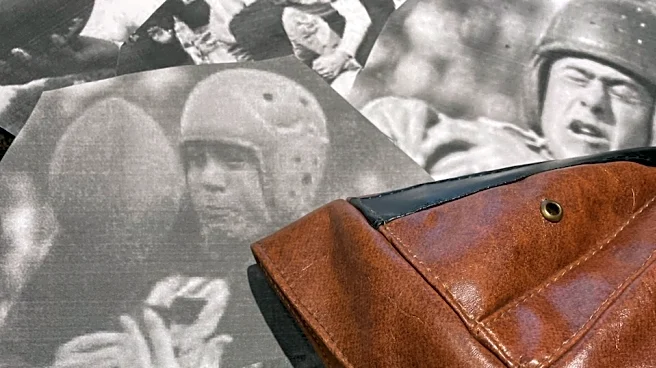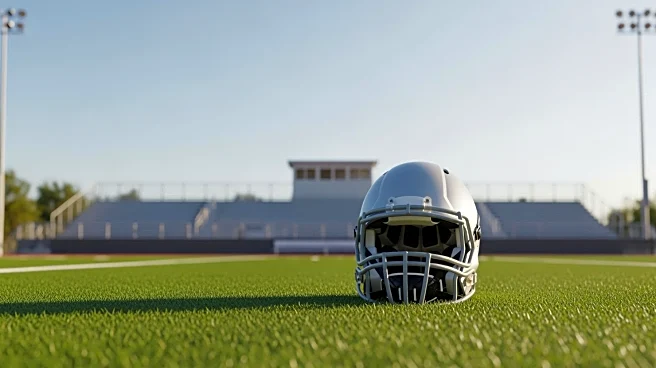Since I’ve already looked back at the Notre Dame games from the year my dad was born (1943) and the year I was born (1971), it felt only right to complete the family trilogy. So this week, I’m rewinding
to 1951 — the year my mom was born — and reliving a classic muddy matchup between Notre Dame and Navy.
It was a rain-soaked, hard-fought battle in Baltimore that showed the grit and grind of Frank Leahy’s Irish at their best. Despite the sloppy conditions, Notre Dame found its rhythm through bursts of brilliance — and the Midshipmen never stood a chance.
The below excerpt is from the December 7, 1951 issue of The Notre Dame Scholastic, Vol. 93, No. 12, written by Jack Sand.

Midshipmen Toppled in Mud 19–0
By Jack Sand | November 3, 1951 | Baltimore, Maryland
Three lightning-quick touchdowns, two of them coming within a minute of the second period on long runs from scrimmage by Neil Worden and John Mazur, and a third coming in the final quarter on a 74 yard romp by Billy Barrett, added up to a 19-0 triumph for Frank Leahy’s once-beaten Irish, and thus dunked the Navy’s stubborn Middies a little deeper into the depths of one of football’s most one-sided rivalries. In winning the silver anniversary game of the series in the “land of a thousand puddles” before a capacity crowd of 44,237 shivering fans at Baltimore’s Municipal Stadium, the South Benders made it six straight over the Midshipmen, and twenty out of the twenty-five played to date, including one tie.
Navy, still thirsting for its first victory, displayed flashes of the once brilliant days gone by, but nevertheless were doomed by their own mistakes. The sailors squandered two scoring chances by their errors and set up one Notre Dame touchdown by a fumble. The Irish deservedly enough had the edge in statistics, piling up 177 yards from scrimmage to 128 for Navy.
Defense was predominant in the muck of the stadium turf, as evidenced by 25 punts, 11 via the toe of ND’s Barrett, and 14 by Bob Cameron, the Middies, mighty punter. Under heavy pressure from Notre Dame’s line, the Navy booter averaged 36 yards a kick, getting off one beauty of 62 yards. Barrett only averaged 32 yards but did some splendid sharpshooting at the sidelines, three times putting the ball out of bounds inside the Navy 20.
Notre Dame’s first touchdown came with nine and a half minutes gone in the second quarter, when Worden took a handoff from Mazur and on a beautifully executed delayed buck sprinted 36 yards for the TD. This spectacular thrust capped a four play drive covering 51 yards in all.
Less than a minute later, after Minnie Mavraides had missed the extra point, defensive halfbacks Dan Shannon and Dave Flood jointly recovered Frank Hauff’s fumble on the Navy 22. Barrett then rammed to the 21, from where Mazur skirted Navy’s right end on a split-T sweep, and legged it the rest of the way despite a last yard stumble caused when Hauff missed a clean tackle.
Mavraides made good the point this time to put the Irish ahead 13-0 at halftime. The Midshipmen wound up the first thirty minutes with a minus three yards in rushing and only two first downs.
With Mike Sorrentino at quarterback in place of Bob Zastrow, and Frank Adorney and Vic Vine running hard at the halfbacks. Navy roared back with vengeance in the second half to hold the Irish to a mere 11 yards.
Late in the third period Adorney broke loose for 32 yards to the Notre Dame 21 and moved to another first down on the ten in just two plays. The chance fizzled as a Don Fisher fumble was pounced on by Jack Alessandrini for an Irish recovery.
After an exchange of punts, Notre Dame sealed the verdict in the final canter when the speedy Barrett picked up one of Cameron’s boots on his own 24, and with the aid of a crushing block thrown by Shannon, circled to his left and set sail all the way down the sideline for the score. Mavraides kick was wide and the score remained 19-0.
The never-say-die sailors then shoved off on a last ditch attempt to score. After the kickoff Dean Smith and Jack Perkins collaborated to lug the leather to the Irish 44. Cameron, then faked a punt and passed 14 yards to Vine on the 30. Perkins then ripped inside tackle for ten and Vine moved to the 12 for a first down. Cameron then flipped to Seiber on the three but the Middies failed to crack the goal-line after two tries, getting to the one-foot line as the clock ran out.
The leading ground gainer for the Irish was the hard-working Worden who racked off 96 yards in 21 carries. Competing with the fleet sophomore was frosh halfback Paul Reynolds, who also did some fine running in picking up 33 yards. Another outstanding performance was turned in by Mazur who called one of his slickest games of the year.
It’s easy to picture my mom as a newborn that fall, while Notre Dame’s gridders were sliding through the mud in Baltimore — a fitting snapshot of the postwar era, when football was rugged, defenses ruled, and legends like Frank Leahy defined toughness.
Each of these generational lookbacks — 1943, 1951, and 1971 — reminds me how deeply Notre Dame football runs through my family’s timeline. The faces and coaches change, the uniforms evolve, but that same indomitable Irish spirit endures across the decades.
Cheers & GO IRISH!




